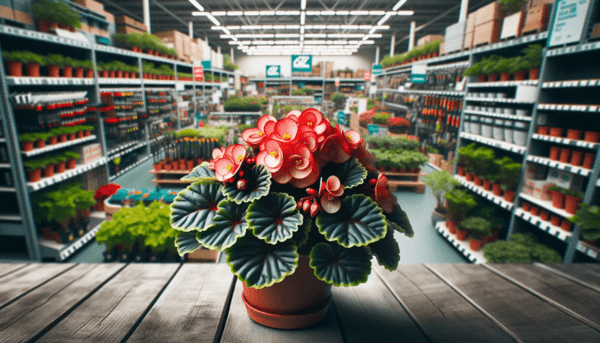
begonia
Information for the customer:
- Plant Position: indoor
- Soil Type: well draining , porous
- Watering Needs: moderate: anytime between weekly to fortnightly
- Shade Requirements: yes
- Lighting Requirements: more light: 75% - 100% of daily sun
- Pet Child Friendly: no
- Air Purifying: yes
Extensive Info on the begonia:
How do you take care of a Begonia?
Location
The Begonia likes to be placed in a spot with lots of light. Not all species tolerate bright light well. It is best to place the plant in medium bright light. Although some species like partial shade best.
Watering
Watering a Begonia plant is probably the most challenging task to nail down. Begonia plants like to be kept evenly moist but won’t tolerate sitting in water. Before watering, it is important to check the soil, by sticking a finger in the soil. If the top of the soil feels dry you're allowed to water the Begonia.
Plant nutrition
The Begonia uses a lot of energy from spring onwards to make new leaves. As a result, the plant needs extra nutrients. You can provide these nutrients by plant nutrition. We recommend giving plant nutrition once every two weeks. From spring until autumn. After autumn and in winter it is better not to give extra nutrients. In the autumn, plant nutrition can actually be harmful for the Begonia!
Repotting
Repotting the Begonia is not necessary every year. The plant is a fast grower, but its roots are really thin. We recommend repotting the plant every 2 years, so it gets new nutrients and more room for root growth. The airier soil is also very good for the water flowing through. The best period to repot is spring.
Air-purifying
The Begonia is a light air-purifying plant. This is mainly due to the amount of leaves of the Begonia. They enhance the surrounding air quality by clearing out benzene and other harmful chemicals by toluene, a liquid found in some waxes and adhesives.
Is a Begonia toxic?
Begonias are mildly toxic. The plant’s juice and sap contain microscopic, poisonous needle-shaped crystals, but its roots and underground tubes are especially toxic.
They are irritating to pets and humans, and can prompt allergic reactions in them. If ingested by pets, they cause intense burning and irritation in the mouth and can also lead to excessive drooling and vomiting.
Diseases and peculiarities
The Begonia is a plant that is very sensitive to mildew. To prevent diseases and vermin you can regularly clean the leaves. Do you come across mildew or other vermin at the Begonia? Then use chemical pesticide.
Frequently asked questions about the Begonia
Can my Begonia bloom?
Yes, it can! Begonias can flower if cared for properly. This flowering does, however, cost the plant extra energy. If you notice that the flowers have finished blooming, it is best to remove them.
How large can my begonia grow?
Begonias are not the largest of indoor plants. The maximum height of a Begonia varies between species. Indoor Begonia Maculata plants can reach a height of around 150 cm. There are also Begonia species which only reach 50 cm in height.
Can you take cuttings from a begonia?
Yes, you certainly can. Check out our tips on how to propagate the Begonia.